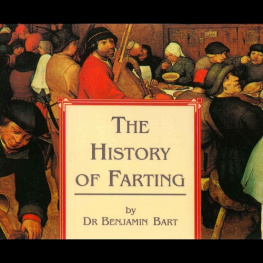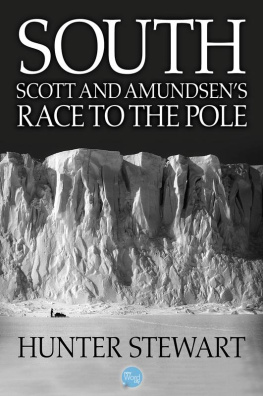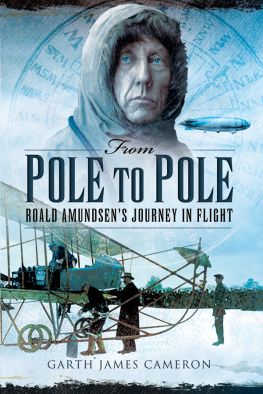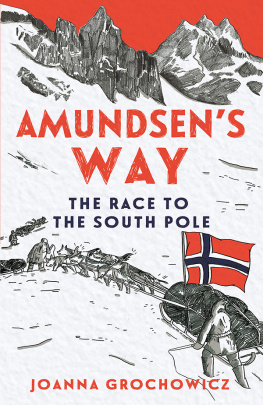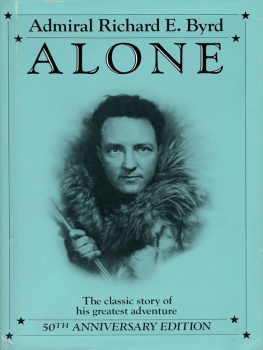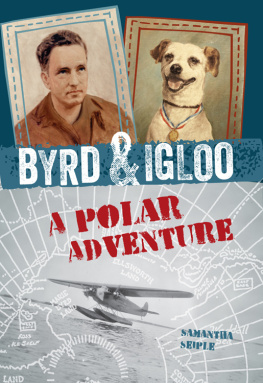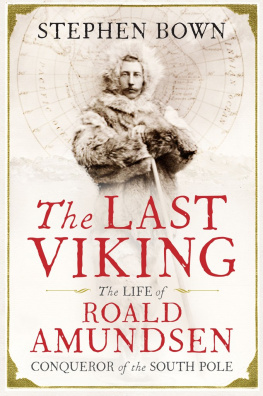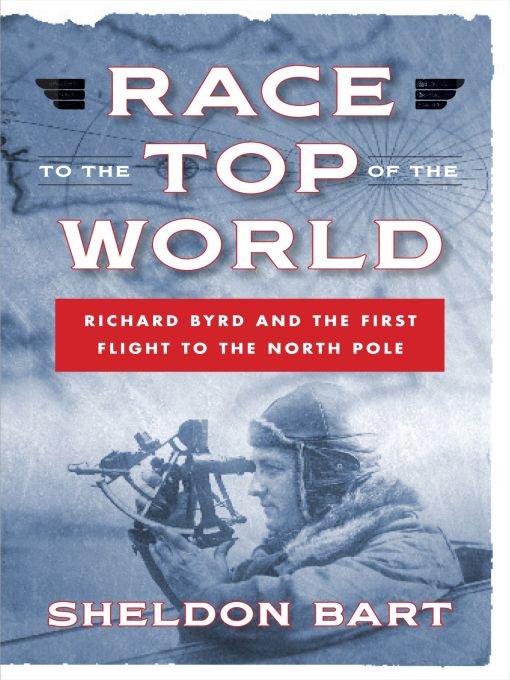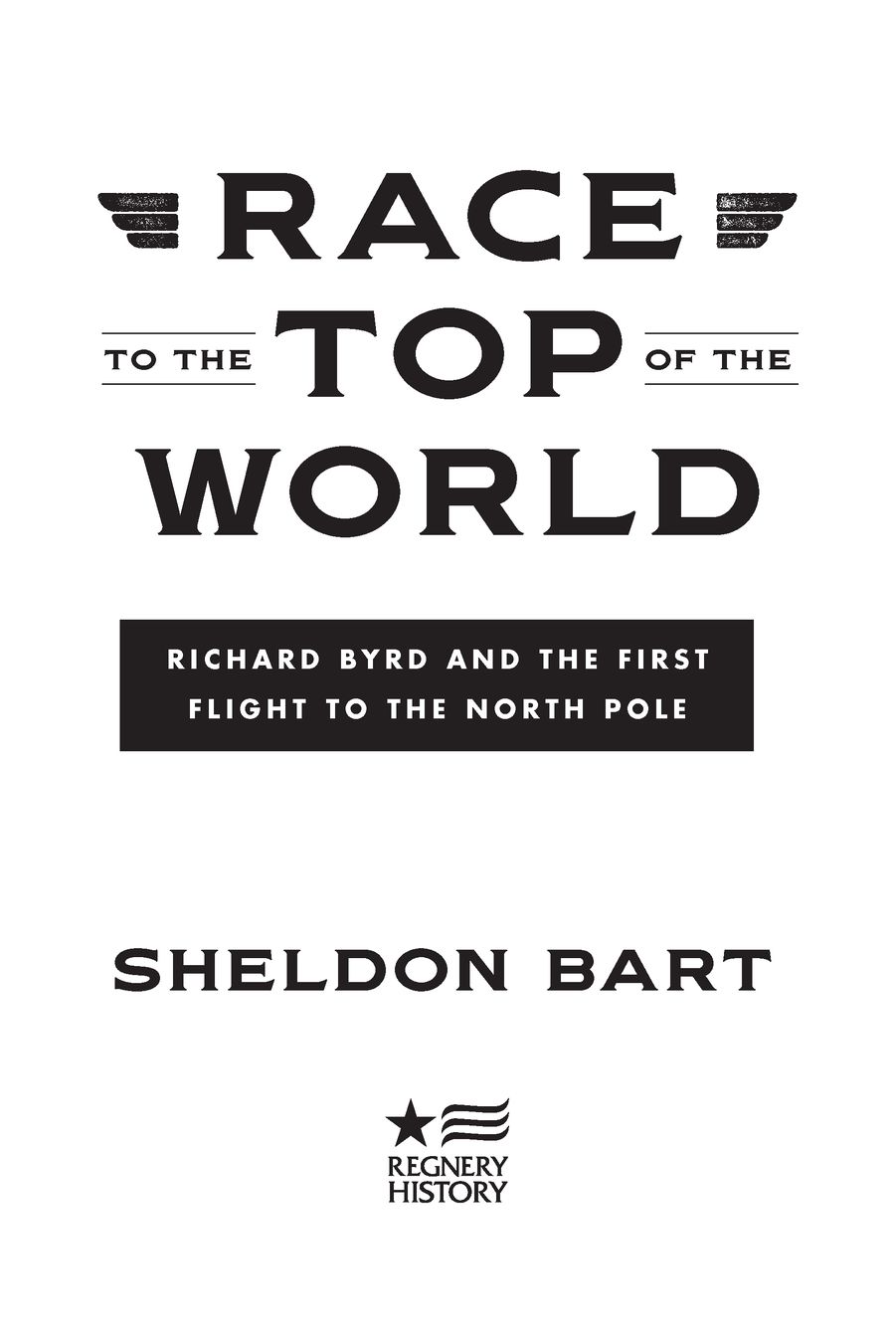Table of Contents
For Tom Thorne
For the rise of man is endless;
Every goal is only a tavern for his marching soul,
Only a camp for the night
In mans eternal flight.
Yes, some time he will pass the earthly bars,
Laugh and reach out his hand among the stars.
EDWIN MARKHAM
To the Top of the World, An Ode in honor of
Commander Byrd, whowith Floyd Bennettdiscovered
the North Pole from the air: May 9, 1926
IDOLS
Have you noticed how economical the human race is with its idols?
It sets them up, enjoys them, then falls upon them and devours them until there is nothing left.
Even the complete consumption of the idol, if it is another human being, is not the end. There are then hundreds of years worth of argument and analysis to be worked through.
IDRIES SHAH
Caravan of Dreams
CAST OF CHARACTERS
Richard E. Byrd (18881957): A sharp, photogenic naval officer who carried the fire at the beginning of aerospace. He mastered aviation technology in its infancy and moved it several important steps forward through his own creativity and resourcefulness. He was not a coward, not an alcoholic, and not disliked by his men. There is no foundation whatsoever to the raging controversy over his North Pole flight and no substantial evidence that he was afraid to fly or afraid of anything other than going broke trying to make ends meet at the ends of the earth.
Floyd Bennett (18901928): The quintessential quiet manupright, fearless, and taciturn. The greatest pilot and most beloved figure of early aviation, he had known extreme poverty as a child, and the stigma of the poorhouse had left an indelible mark on his soul.
Roald Amundsen (18721928): Norways greatest explorer, a huge wintry-faced man who beat Robert Falcon Scott to the South Pole in 1911. Stoic, mysterious, a master of polar travel, and a victim of financial mismanagement always one step ahead of a subpoena, he and Byrd began as rivals and ended as good friends.
Robert Peary (18561920): So indomitable on the ice that he could have been played by Charlton Heston. Peary saw the potential of aviation and would have exploited it had he not been fatally misdiagnosed.
Donald B. MacMillan (18741970): Pearys heir and Americas foremost polar explorer until eclipsed by Byrd. MacMillan was the classic rugged individualisttough, crusty, and cantankerous. He always made the right decisions in matters of life and death but was otherwise a loose cannon.
Eugene F. McDonald (18881958): Imagine Humphrey Bogart playing George Steinbrenner. McDonald looked like the former and behaved like the latter at his most tyrannical. After inventing the installment plan for auto buyers, McDonald founded Zenith Radio. He was buddy-buddy with MacMillan and embarked as second in command of MacMillans most ambitious expedition.
Lincoln Ellsworth (18801951): A fabulously wealthy and outwardly timid gentleman, Ellsworth abandoned Park Avenue for the polar frontier. Like his hero, Wyatt Earp, Ellsworth had a core of steel, and he was determined to make his mark as an explorer. He joined forces with Amundsen and competed with Byrd. But he always played by the Marquess of Queensberry rules.
George O. Rex Noville (18901963): Byrd, Bennett, and Noville were once called The Three Musketeers of the Air. Noville was the Aramis of the trio, a celebrated womanizer. He was also an aviator and a fuel engineer who figured out how to warm up aircraft engines in the freezing cold.
Marie Byrd (18891974): Sweet, shy, gracious, Marie was her husband Richards childhood sweetheart and a silent partner in his exploration career. An old friend described her as a brave and smiling woman ... with all of a womans love and anxiety and her need to do something actively to help.
Rollin Arthur Harris (18631918): The man who started the ball rolling. A researcher with the U.S. Coast and Geodetic Survey, Harris proved the existence of an uncharted continent in the Arctic Ocean. His monograph launched an international race to find and claim the lost Atlantis of the north.
Robert Bob Bartlett (18751946): The greatest Arctic mariner of the first half of the twentieth century. His life was like a John Ford movie, but unfortunately he looked nothing like John Wayne. An authentic hero miscast as comic relief.
Fitzhugh Green (18881947): Surely the Navys first undercover publicist, Green, a lieutenant commander, described his job as writing and conniving. He was good at both. An old friend of Byrds from the Naval Academy, he sledged across the Arctic and blazed a literary trail in New York.
Bernt Balchen (18991973): A talented aviator, lovable, ambitious, and enigmatic. Balchen became world famous as a result of his association with Byrd but turned on Byrd after a number of later reversals. Perhaps he owed Byrd too much.
George Hubert (eventually Sir Hubert) Wilkins (18881958): An explorer who looked like one. Big, burly, and bearded, Wilkins, an Australian, was backed in the Arctic derby by the city of Detroit.
Albert H. Bumstead (18751940): A cartographer with the National Geographic Society, he created a huge navigation aid the size of small jar. He called it a sun compass.
Bert Acosta (18951954): One of the leading fliers of the hard-drinking, barnstorming era. Acosta looked like Clark Gable, tall and macho, and easily glided from bottle to throttle. He pinch-hit for Floyd Bennett on Byrds transatlantic flight, but the booze took its toll in a critical inning.
Clarence Chamberlin (18931976): Acostas match in the cockpit but his opposite in temperament. Chamberlin was low-key, laid-back, and self-effacing. Quite possibly the only aviator in history to navigate across the Atlantic Ocean by means of the New York Times.
Anthony H. G. Fokker (18901939): A loud, boyish, self-promoting airplane manufacturer known for building high-performance aircraft and pulling lowbrow pranks. His favorite dish was ice cream.
Rodman Wanamaker (18631928): The opposite of Anthony Fokker. A genteel department store magnate who took seriously his role as a corporate citizen. Classical musicians performed in his store. If Wanamaker could have stomached Fokker, Byrd would have beaten Lindbergh to Paris.
Noel Davis (18911927): His classmates at the Naval Academy could envision him as president of the United States. One of the favorites in the transatlantic race until a fatal crash.
Charles A. Lindbergh (19021974): The dark horse in the transatlantic race, Lindy was lucky in numerous ways. Barring a court order, for example, Chamberlin would have been first across the Atlantic.
PART 1
THE TRANSPOLAR FLIGHT
ONE MILLION SQUARE MILES
Captain Bartlett explains it with his finger on the polar map.
You see that white space? Thats unexplored territory.
Theres more than a million square miles of it. We want
to wipe that white space outhe swept his hand across
the bit of blank space. We want to brush it away.


